Abstract
K contractures and asymmetrical charge movement were recorded in extensor digitorum longus (e.d.l.) and soleus muscles that had been denervated for 2-68 days. The relationship between maximum tension during a K contracture and membrane potential shifted to more negative potentials in denervated e.d.l. muscles (by -25 mV on average) and to a lesser extent in soleus (by -8 mV on average), and became steeper, more so in e.d.l. than soleus. Apart from an early negative shift of -11 mV in the voltage dependence of tension in e.d.l. muscles during the first week, the other changes in K contractures following denervation occurred progressively during the first 3 weeks and then stabilized. There was a clear difference in charge movement in denervated e.d.l. fibres but little change in denervated soleus fibres, so that the characteristics of charge movement in e.d.l. and soleus became very similar. The maximum amount of charge movement fell from an average normal value of 23 nC/microF to 6 nC/microF in e.d.l. within the first 2 weeks. The voltage sensitivity shifted to more negative potentials (by about -12 mV on average) within the first week. There was no significant change in the slope of the relationship between charge and membrane potential. The effects of denervation on charge movement could only partly explain the changes in K contractures. The only obvious parallels were the early negative shift in the voltage dependence of charge movement and tension in denervated e.d.l. fibres. The other changes in K contractures in denervated fibres could be due to a change in the relationship between charge movement and Ca concentration in the myoplasm or an increase in the Ca affinity of the myofilaments. Although charge movement fell to about a quarter of normal in denervated e.d.l. fibres, membrane capacity increased approximately 3-fold. A similar increase in capacity in soleus fibres was not associated with a change in charge movement. Fewer indentations were seen in denervated than in normal e.d.l. fibres. The decrease paralleled the fall in charge movement.
Full text
PDF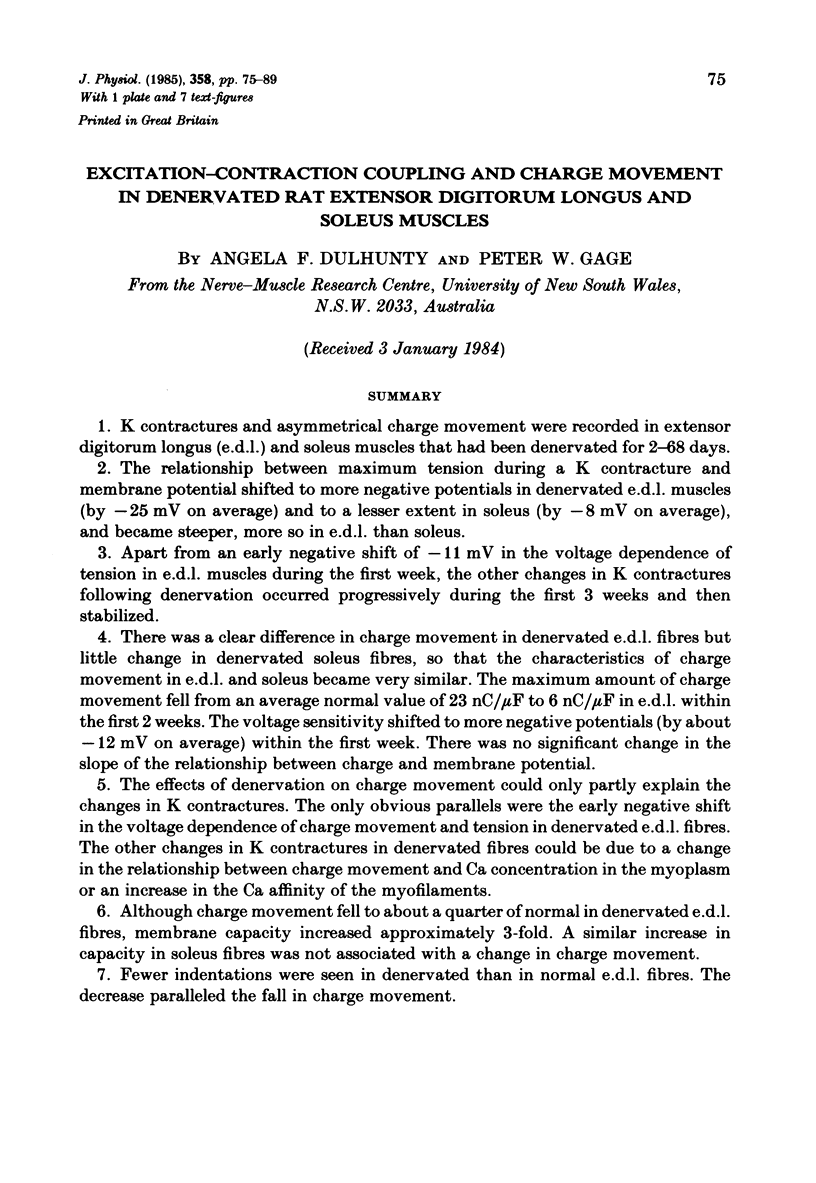
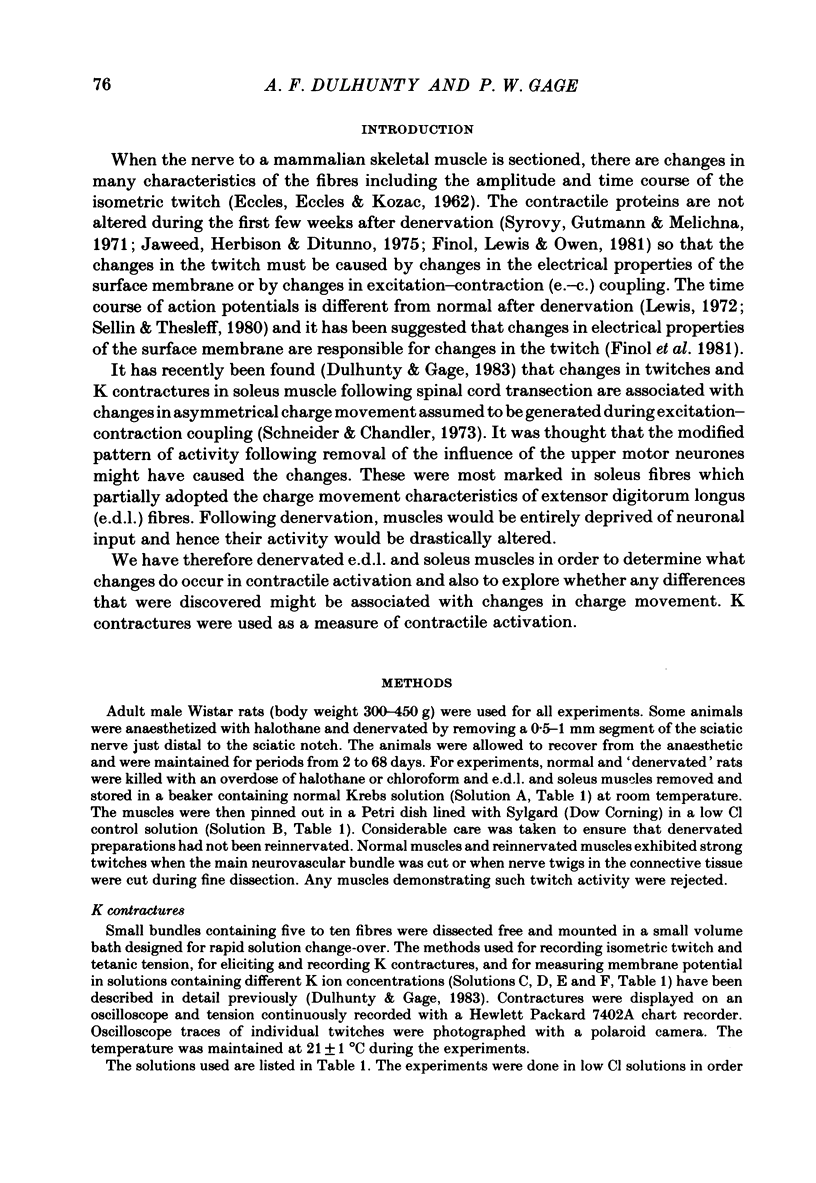
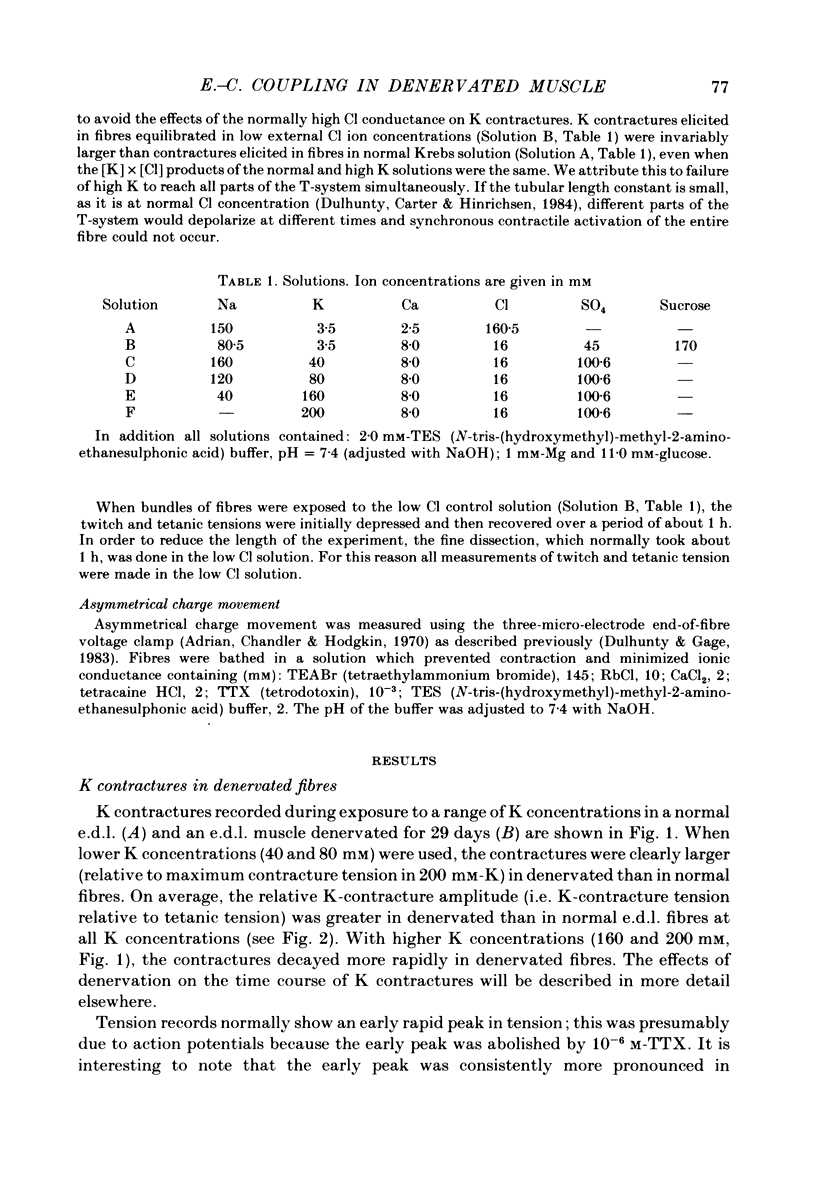
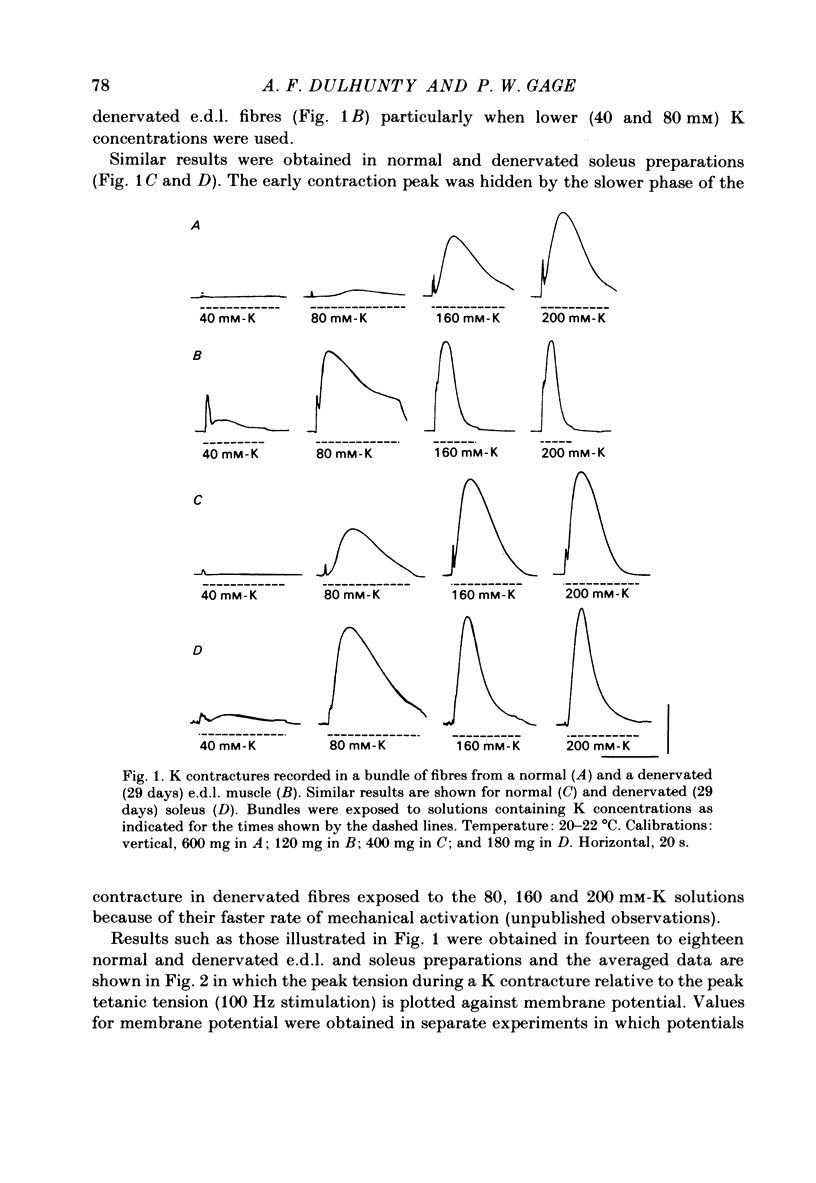
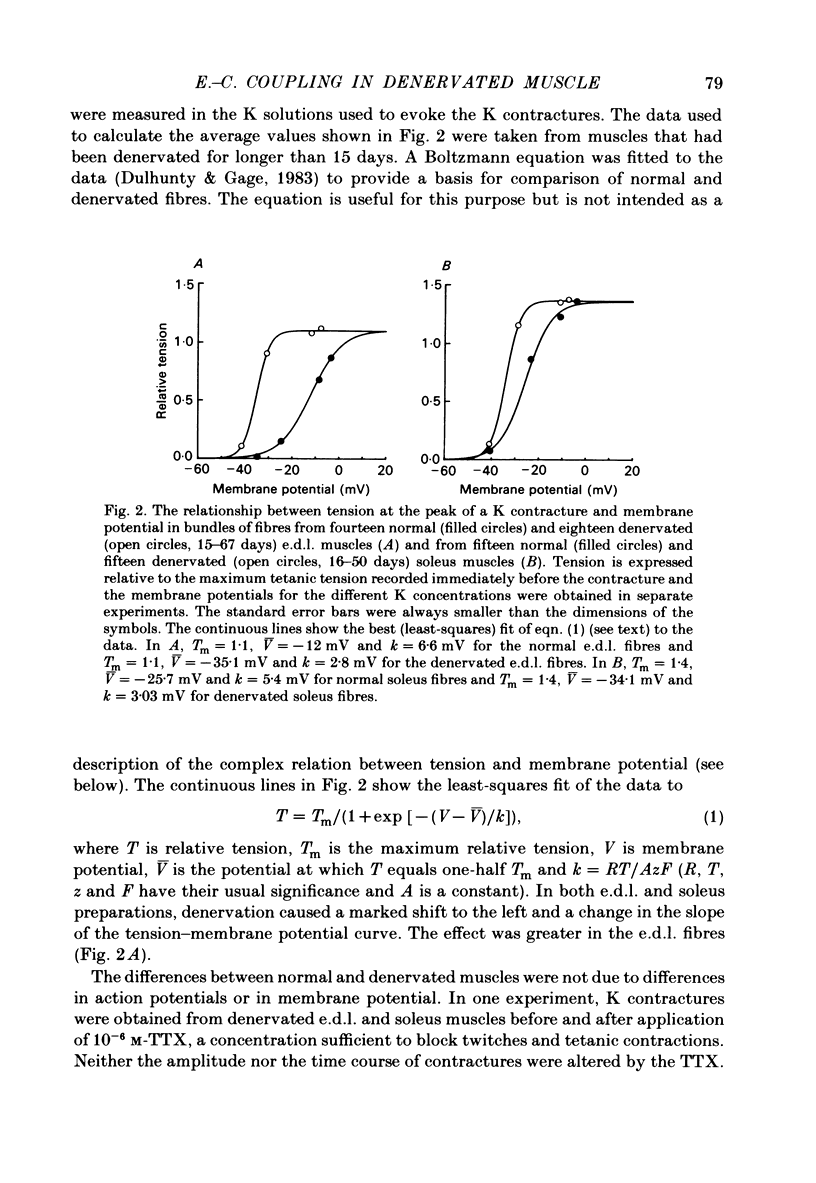

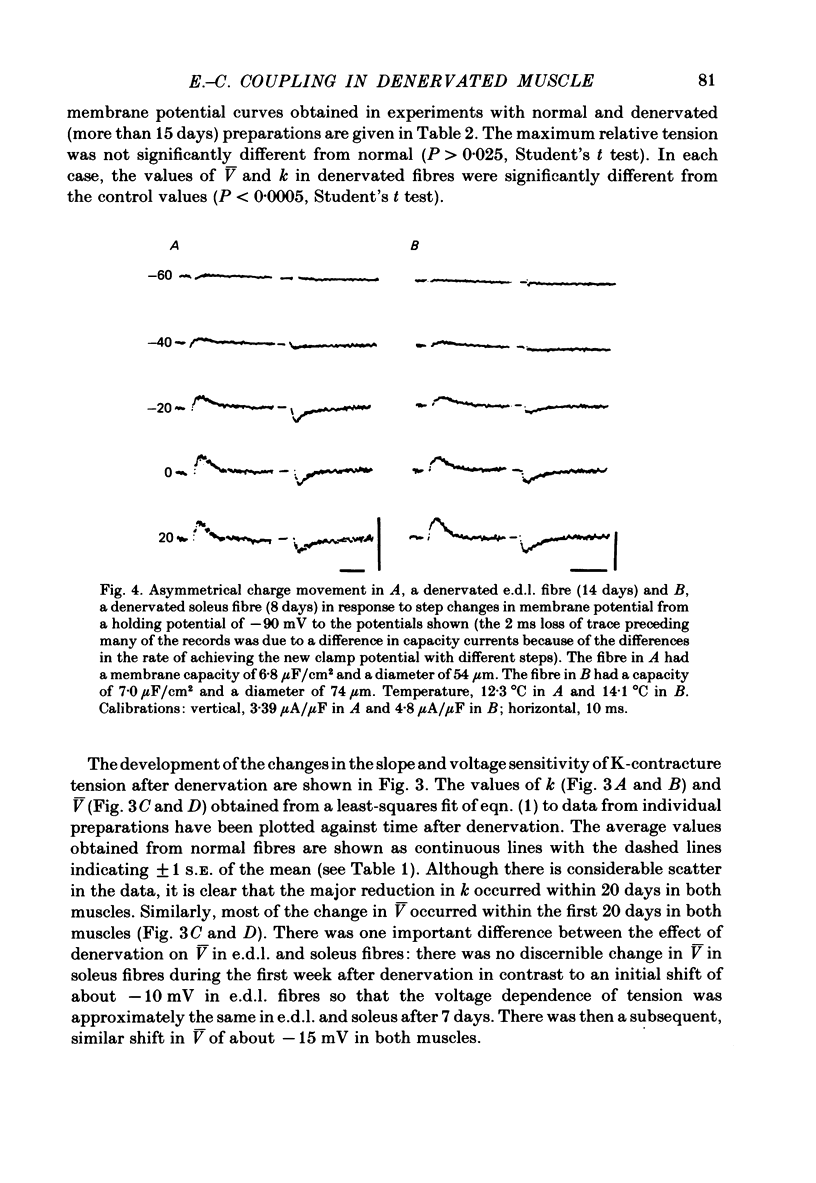
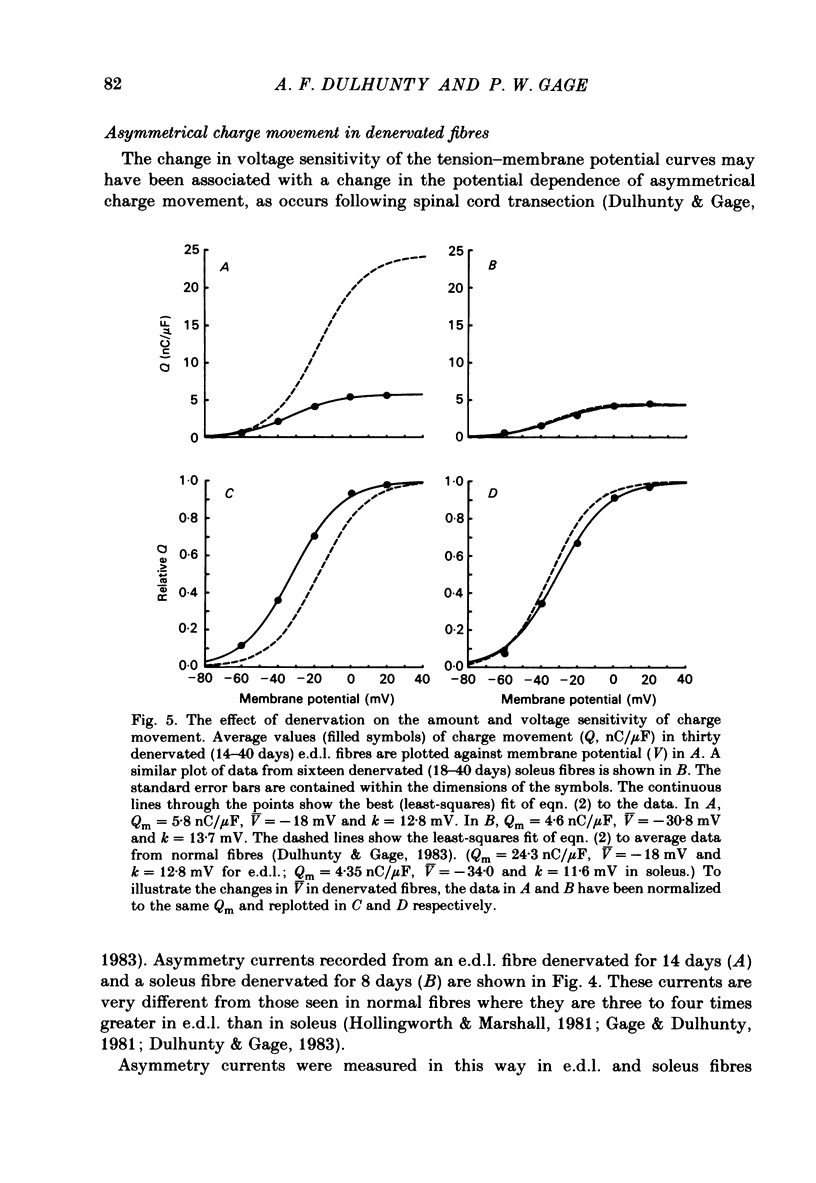
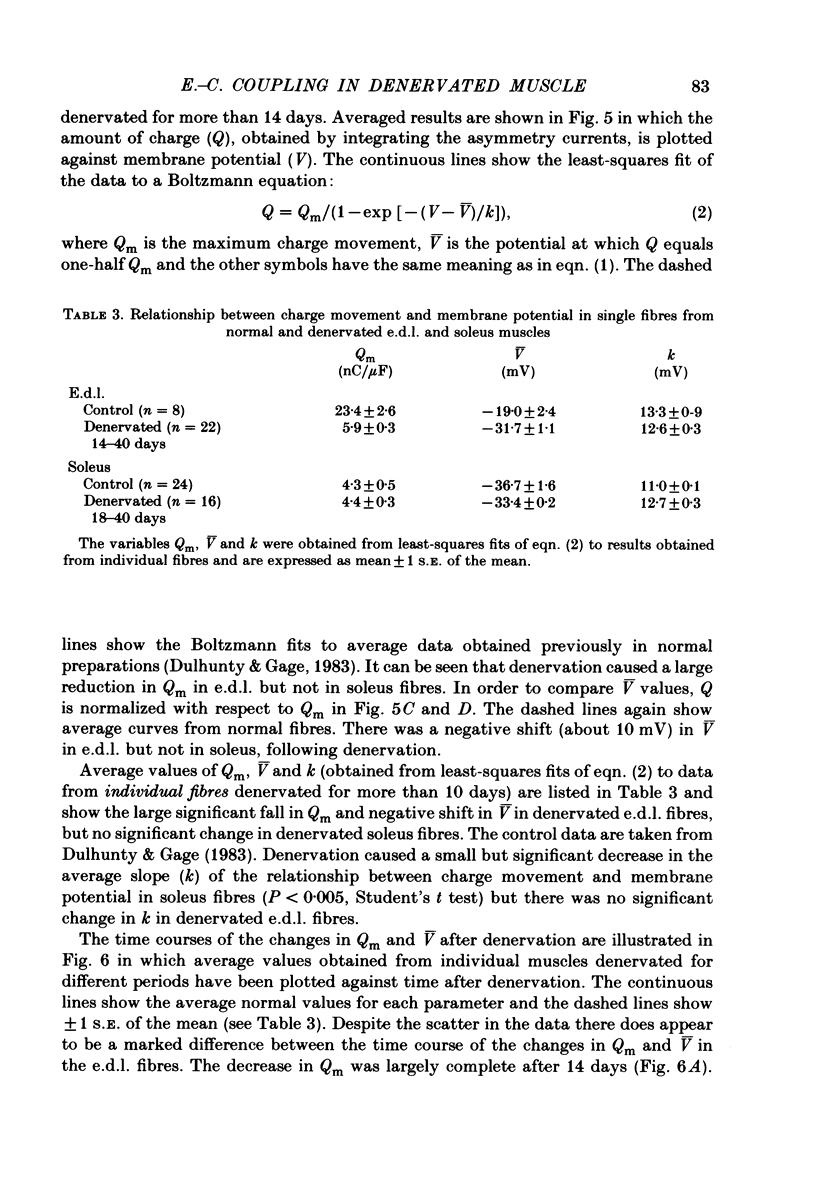
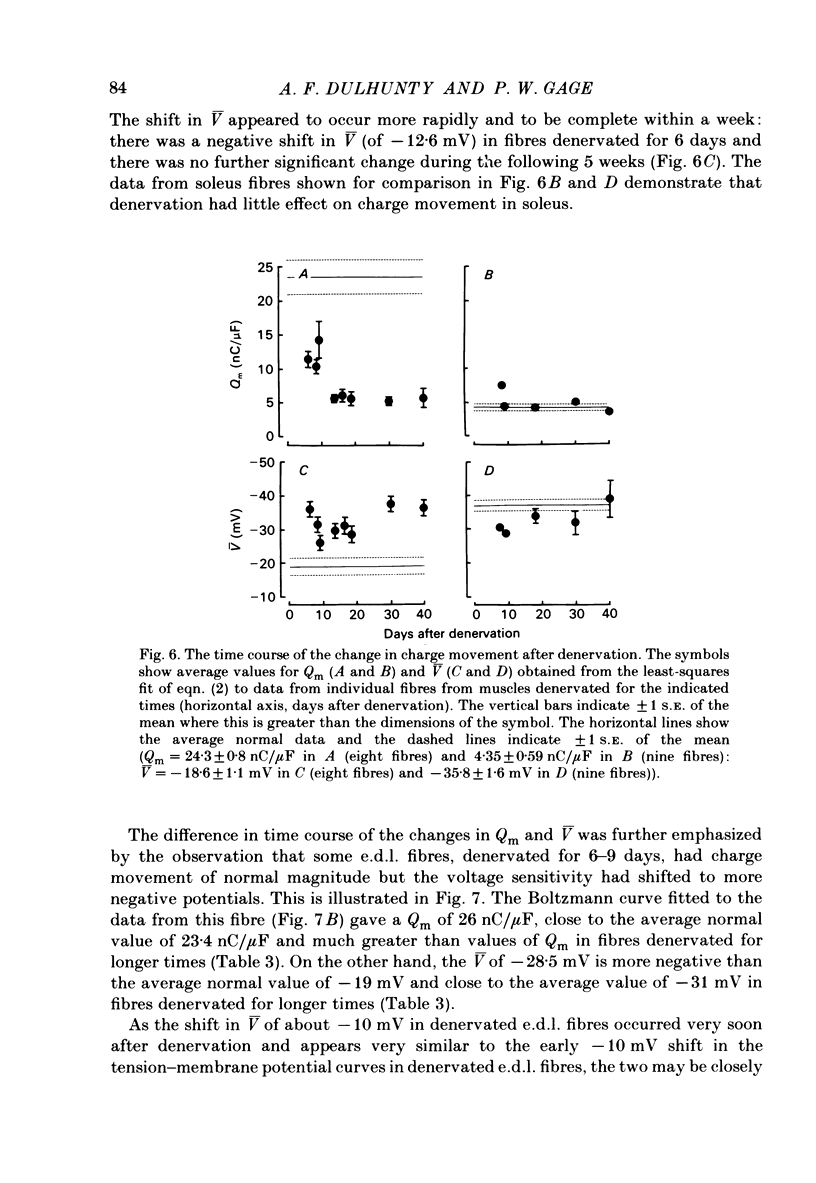
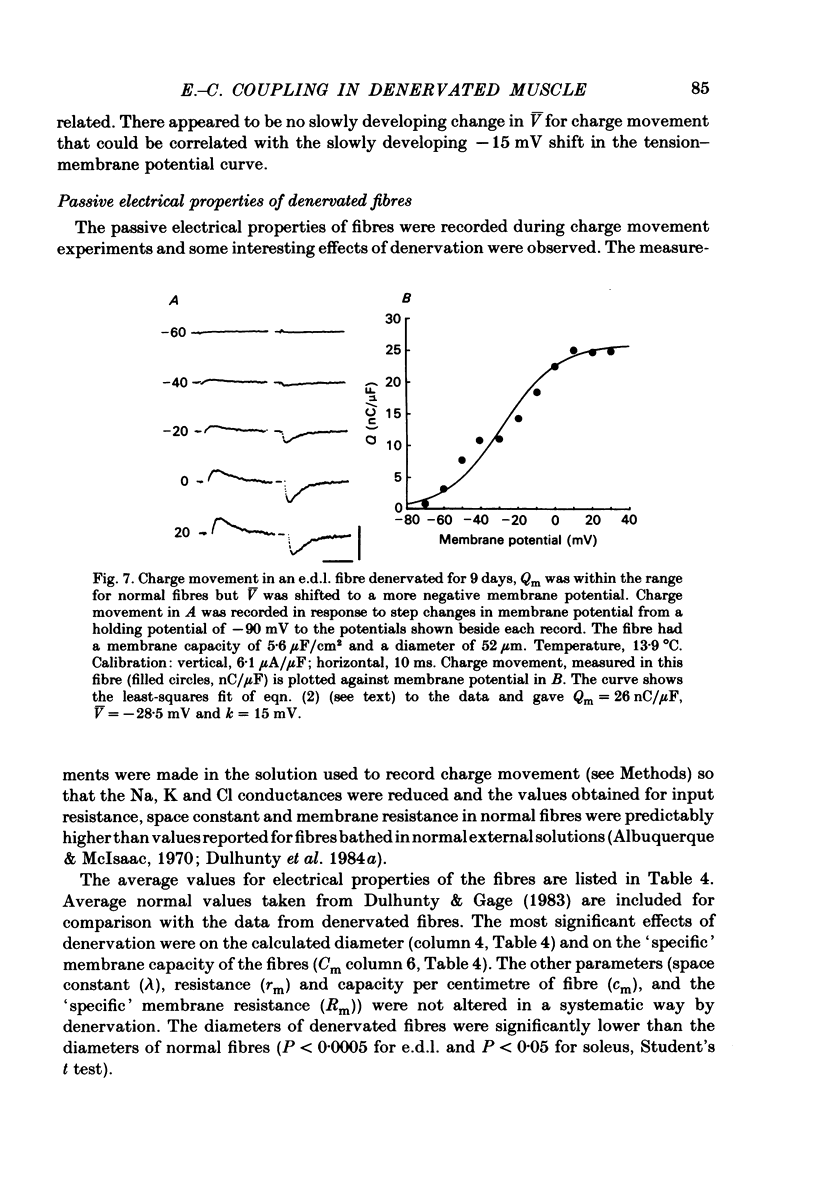
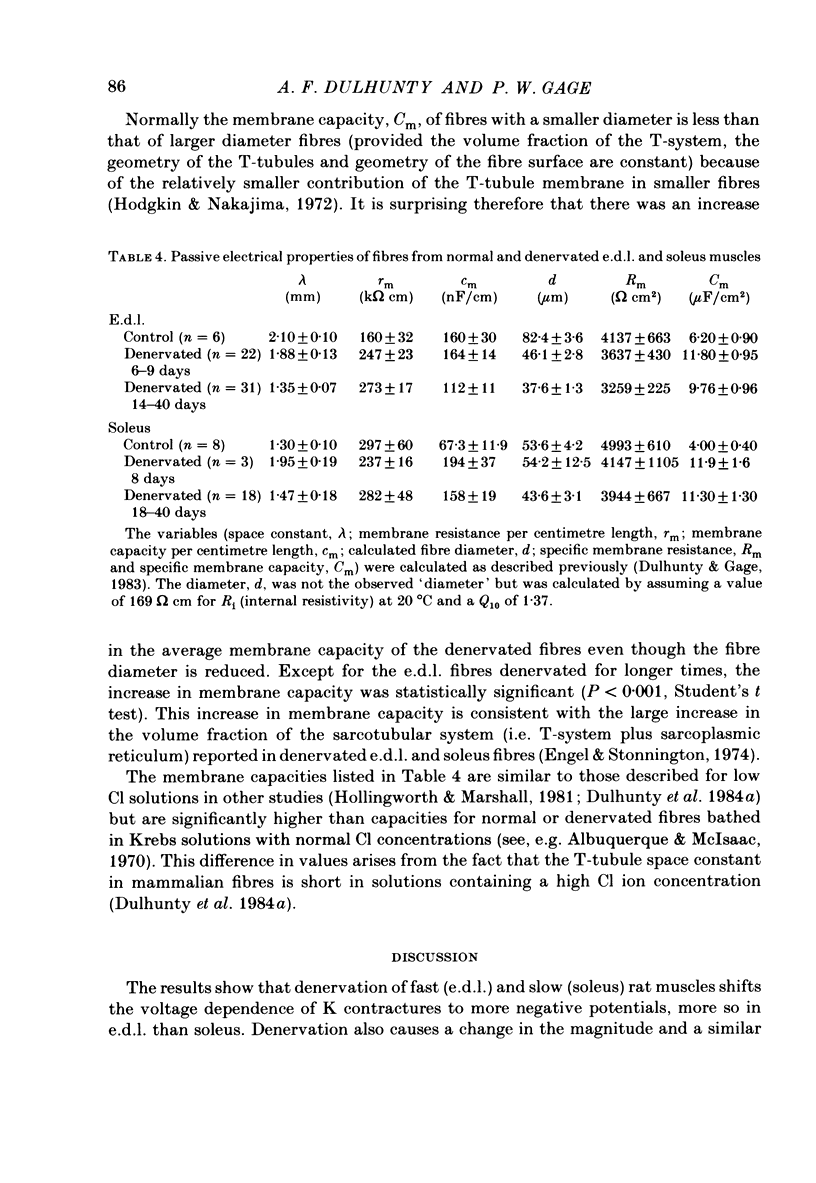
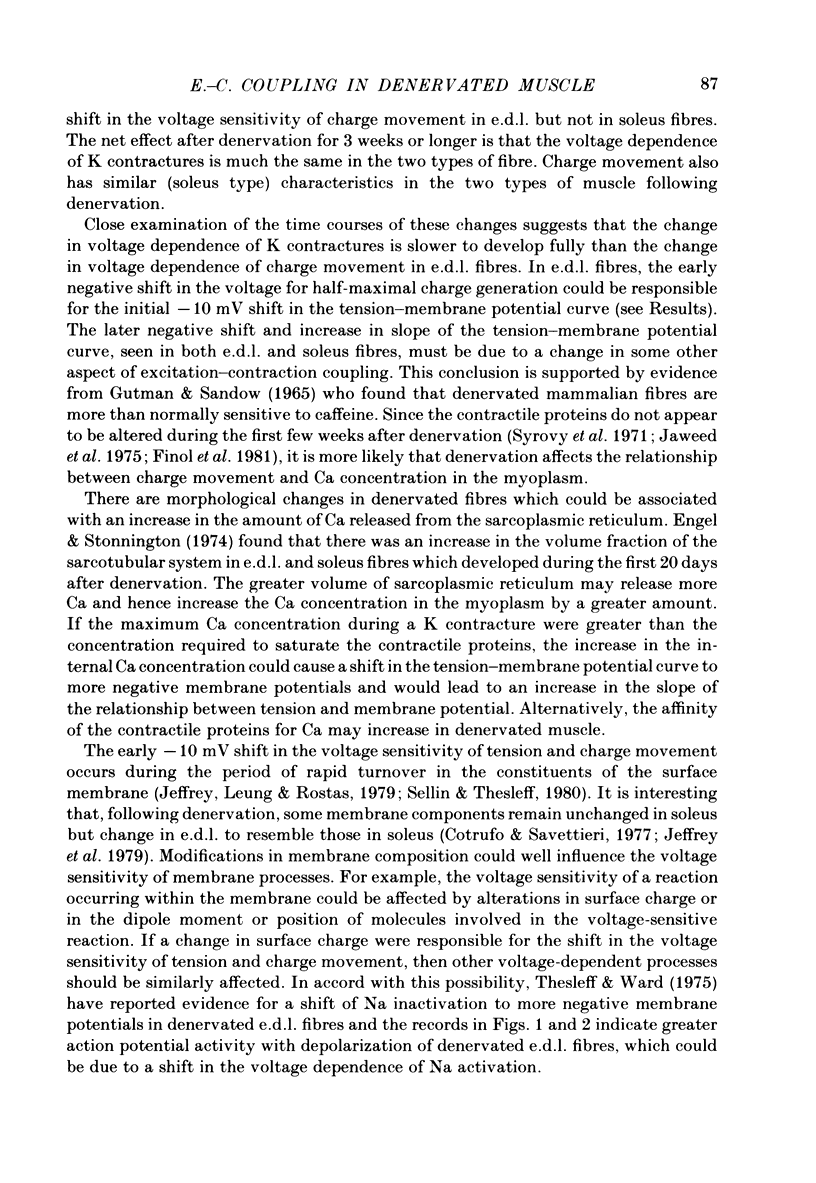
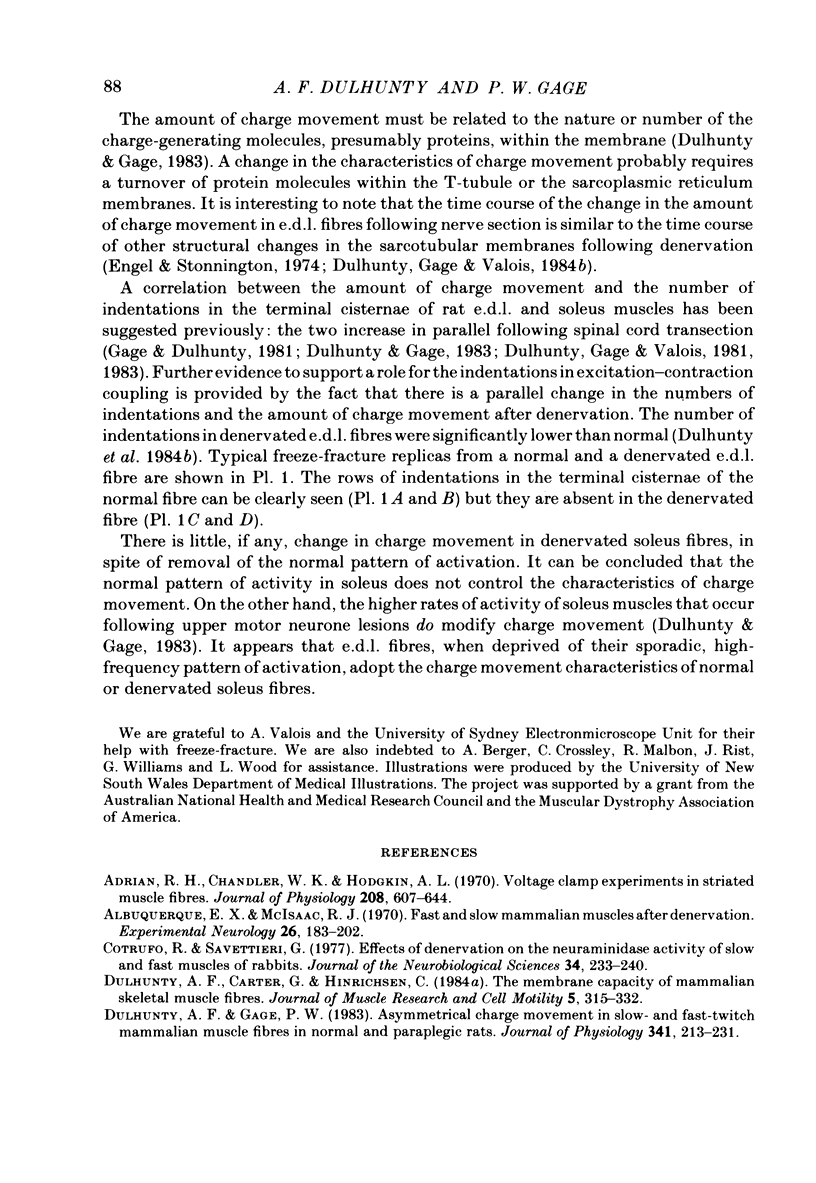
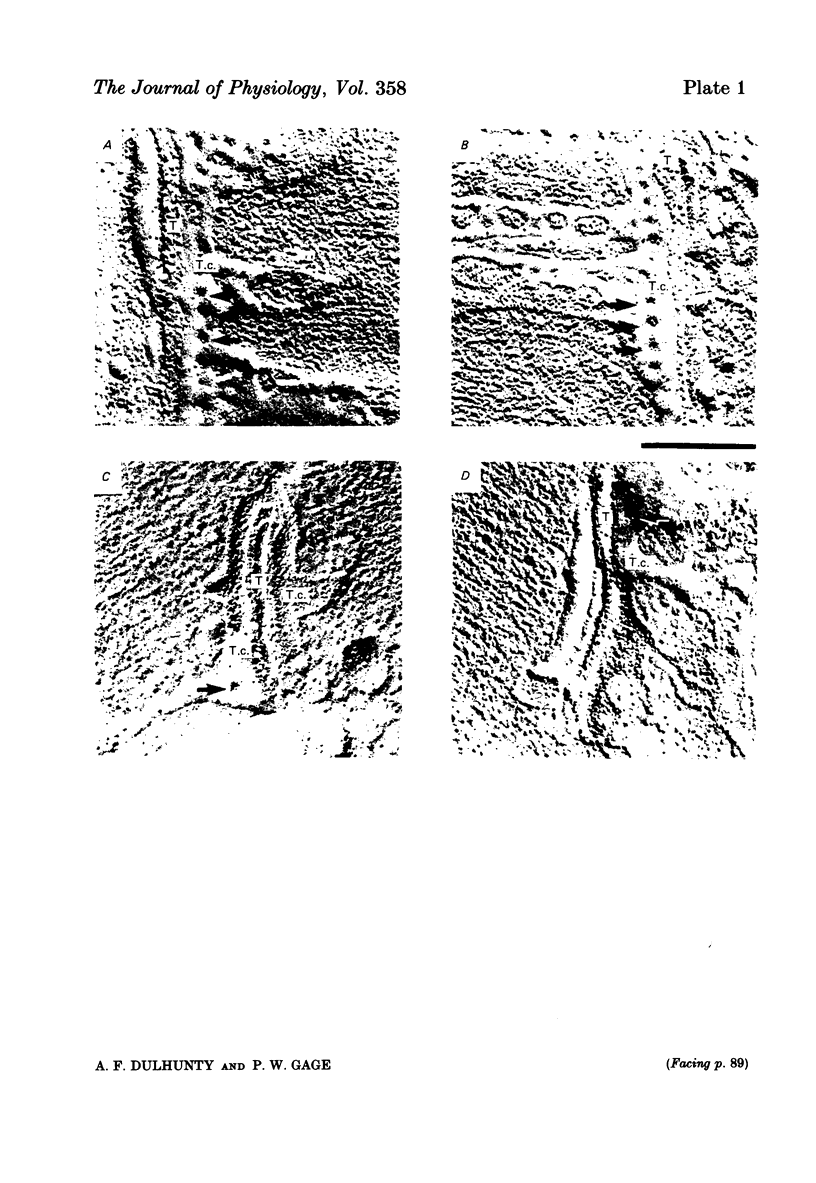
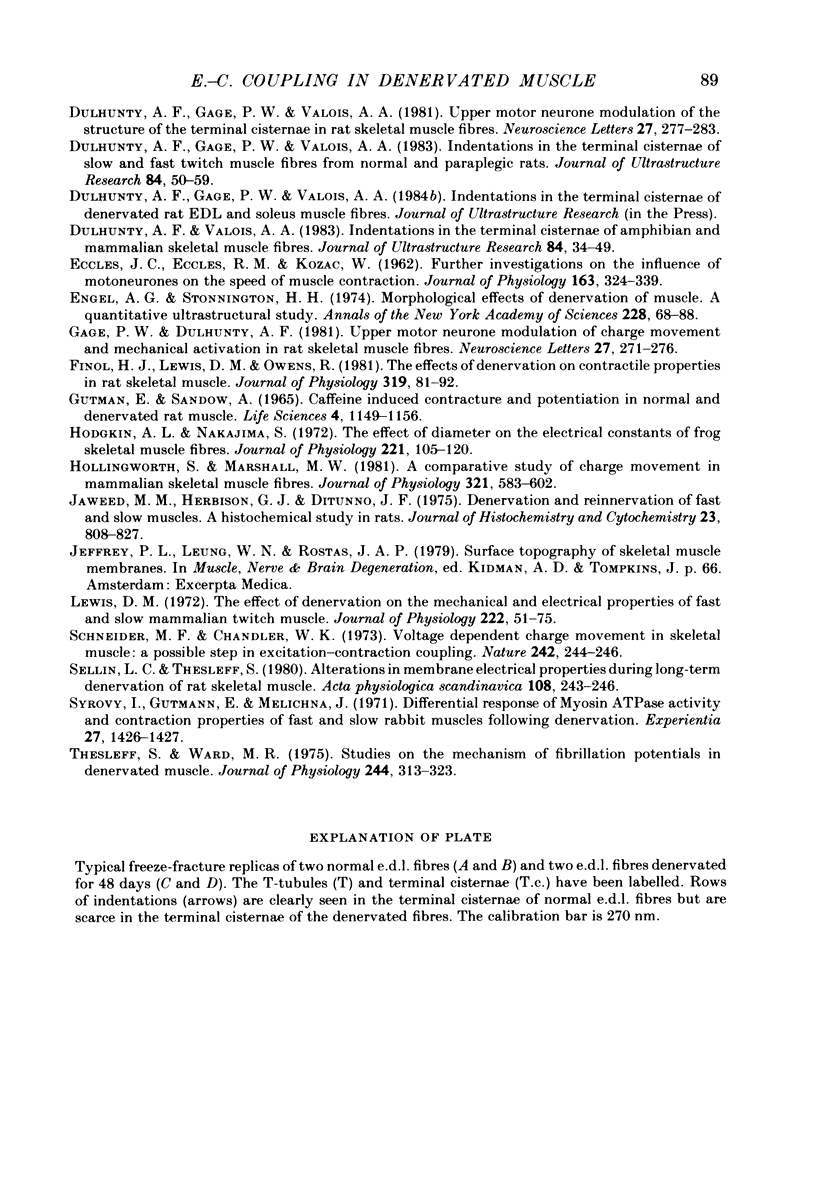
Images in this article
Selected References
These references are in PubMed. This may not be the complete list of references from this article.
- Adrian R. H., Chandler W. K., Hodgkin A. L. Voltage clamp experiments in striated muscle fibres. J Physiol. 1970 Jul;208(3):607–644. doi: 10.1113/jphysiol.1970.sp009139. [DOI] [PMC free article] [PubMed] [Google Scholar]
- Albuquerque E. X., McIsaac R. J. Fast and slow mammalian muscles after denervation. Exp Neurol. 1970 Jan;26(1):183–202. doi: 10.1016/0014-4886(70)90099-3. [DOI] [PubMed] [Google Scholar]
- Cotrufo R., Savettieri G. Effects of denervation on the neuraminidase activity of slow and fast muscles of rabbits. J Neurol Sci. 1977 Nov;34(2):233–240. doi: 10.1016/0022-510x(77)90071-5. [DOI] [PubMed] [Google Scholar]
- Dulhunty A. F., Gage P. W. Asymmetrical charge movement in slow- and fast-twitch mammalian muscle fibres in normal and paraplegic rats. J Physiol. 1983 Aug;341:213–231. doi: 10.1113/jphysiol.1983.sp014802. [DOI] [PMC free article] [PubMed] [Google Scholar]
- Dulhunty A. F., Gage P. W., Valois A. A. Upper motor neurone modulation of the structure of the terminal cisternae in rat skeletal muscle fibres. Neurosci Lett. 1981 Dec 23;27(3):277–283. doi: 10.1016/0304-3940(81)90443-2. [DOI] [PubMed] [Google Scholar]
- Dulhunty A., Carter G., Hinrichsen C. The membrane capacity of mammalian skeletal muscle fibres. J Muscle Res Cell Motil. 1984 Jun;5(3):315–332. doi: 10.1007/BF00713110. [DOI] [PubMed] [Google Scholar]
- Dulhunty A., Gage P., Valois A. Indentations in the terminal cisternae of slow- and fast-twitch muscle fibers from normal and paraplegic rats. J Ultrastruct Res. 1983 Jul;84(1):50–59. doi: 10.1016/s0022-5320(83)90085-0. [DOI] [PubMed] [Google Scholar]
- Dulhunty A., Valois A. Indentations in the terminal cisternae of amphibian and mammalian skeletal muscle fibers. J Ultrastruct Res. 1983 Jul;84(1):34–49. doi: 10.1016/s0022-5320(83)90084-9. [DOI] [PubMed] [Google Scholar]
- Eccles J. C., Eccles R. M., Kozak W. Further investigations on the influence of motoneurones on the speed of muscle contraction. J Physiol. 1962 Sep;163(2):324–339. doi: 10.1113/jphysiol.1962.sp006978. [DOI] [PMC free article] [PubMed] [Google Scholar]
- Engel A. G., Stonnington H. H. Trophic functions of the neuron. II. Denervation and regulation of muscle. Morphological effects of denervation of muscle. A quantitative ultrastructural study. Ann N Y Acad Sci. 1974 Mar 22;228(0):68–88. doi: 10.1111/j.1749-6632.1974.tb20503.x. [DOI] [PubMed] [Google Scholar]
- Finol H. J., Lewis D. M., Owens R. The effects of denervation on contractile properties or rat skeletal muscle. J Physiol. 1981;319:81–92. doi: 10.1113/jphysiol.1981.sp013893. [DOI] [PMC free article] [PubMed] [Google Scholar]
- Gage P. W., Dulhunty A. F. Upper motor neurone modulation of charge movement and mechanical activation in rat skeletal muscle fibres. Neurosci Lett. 1981 Dec 23;27(3):271–276. doi: 10.1016/0304-3940(81)90442-0. [DOI] [PubMed] [Google Scholar]
- Gutmann E., Sandow A. Caffeine-induced contracture and potentiation of contraction in normal and denervated rat muscle. Life Sci. 1965 Jun;4(11):1149–1156. doi: 10.1016/0024-3205(65)90104-9. [DOI] [PubMed] [Google Scholar]
- Hodgkin A. L., Nakajima S. The effect of diameter on the electrical constants of frog skeletal muscle fibres. J Physiol. 1972 Feb;221(1):105–120. doi: 10.1113/jphysiol.1972.sp009742. [DOI] [PMC free article] [PubMed] [Google Scholar]
- Hollingworth S., Marshall M. W. A comparative study of charge movement in rat and frog skeletal muscle fibres. J Physiol. 1981 Dec;321:583–602. doi: 10.1113/jphysiol.1981.sp014004. [DOI] [PMC free article] [PubMed] [Google Scholar]
- Jaweed M. M., Herbison G. J., Ditunno J. F. Denervation and reinnervation of fast and slow muscles. A histochemical study in rats. J Histochem Cytochem. 1975 Nov;23(11):808–827. doi: 10.1177/23.11.127809. [DOI] [PubMed] [Google Scholar]
- Lewis D. M. The effect of denervation on the mechanical and electrical responses of fast and slow mammalian twitch muscle. J Physiol. 1972 Apr;222(1):51–75. doi: 10.1113/jphysiol.1972.sp009787. [DOI] [PMC free article] [PubMed] [Google Scholar]
- Schneider M. F., Chandler W. K. Voltage dependent charge movement of skeletal muscle: a possible step in excitation-contraction coupling. Nature. 1973 Mar 23;242(5395):244–246. doi: 10.1038/242244a0. [DOI] [PubMed] [Google Scholar]
- Sellin L. C., Thesleff S. Alterations in membrane electrical properties during long-term denervation of rat skeletal muscles. Acta Physiol Scand. 1980 Mar;108(3):243–246. doi: 10.1111/j.1748-1716.1980.tb06529.x. [DOI] [PubMed] [Google Scholar]
- Syrový I., Gutmann E., Melichna J. Differential response of myosin--ATPase activity and contraction properties of fast and slow rabbit muscles following denervation. Experientia. 1971 Dec 15;27(12):1426–1427. doi: 10.1007/BF02154269. [DOI] [PubMed] [Google Scholar]
- Thesleff S., Ward M. R. Studies on the mechanism of fibrillation potentials in denervated muscle. J Physiol. 1975 Jan;244(2):313–323. doi: 10.1113/jphysiol.1975.sp010800. [DOI] [PMC free article] [PubMed] [Google Scholar]



